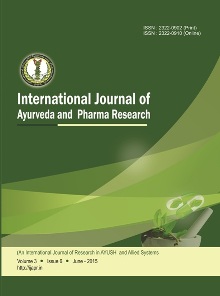Astavarga (Eight) Medicinal Plants in Ayurveda
Abstract
Astavarga refers to a group of eight potent medicinal plants used in Ayurveda, an ancient Indian system of medicine. These plants are renowned for their therapeutic properties and are commonly utilized in various Ayurvedic formulations to promote health and treat specific ailments. The Astavarga group indeed holds immense significance in traditional Ayurvedic medicine due to its therapeutic properties. These plants have been valued for their medicinal benefits, such as enhancing vitality, bolstering the immune system, and promoting cellular regeneration. Given their importance and the threat of endangerment faced by many of these species, conservation efforts are crucial. Protecting and cultivating these plants can ensure their sustainability for future generations and maintain the availability of essential ingredients for Ayurvedic formulations. Creating awareness among the public about the significance of these medicinal plants could lead to increased demand and subsequently encourage cultivation initiatives. Moreover, integrating modern agricultural practices with traditional knowledge can aid in cultivating these plants effectively while preserving their medicinal properties. Efforts to protect and propagate these species could involve collaboration between conservationists, herbalists, farmers, and governmental organizations. This collective effort can not only help in preserving biodiversity but also maintain the heritage and efficacy of Ayurvedic medicine.
Copyright (c) 2025 International Journal of Ayurveda and Pharma Research

This work is licensed under a Creative Commons Attribution-NonCommercial-ShareAlike 4.0 International License.


